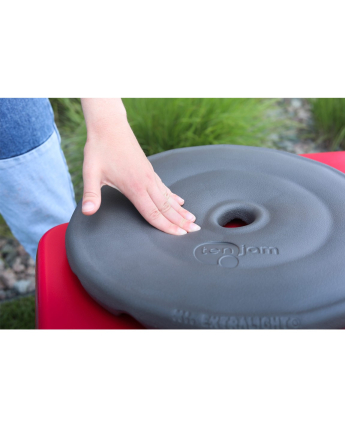When embarking on a new foam injection molding project, it is crucial to gather specific information about the desired foam characteristics. Two vital factors to consider are foam hardness and density. In this article, we will delve into the significance of hardness and density in foam injection molding processes. Understanding these properties will enable you to make informed decisions and achieve the desired foam qualities for your projects.
The Significance of Foam Hardness
Foam hardness, in the context of foam injection molding, refers to the tactile feel of the part's exterior. Hardness is an essential characteristic to consider when selecting foam materials for specific applications. It is determined using a durometer, which measures the material's resistance to indentation. The durometer's indenter penetrates the foam material to a depth of 2.54 mm. The most common hardness scales used are the Shore A and Shore D scales. The Shore A scale is employed for flexible and softer foams, while the Shore D scale is suitable for harder and more rigid foams.
The selection of foam hardness depends on the desired tactile qualities and the specific application requirements. For applications where a soft and plush feel is desired, a lower hardness foam on the Shore A scale is preferred. These foams offer enhanced comfort and are commonly used in seating applications. On the other hand, applications that necessitate a firm and rigid exterior, such as protective packaging or structural components, benefit from higher hardness foams, typically measured on the Shore D scale.
When considering foam hardness, it is crucial to recognize that the geometry of the part also plays a significant role in determining support and cushioning. While hardness contributes to the overall tactile feel, the part's shape, thickness, and design features significantly impact its ability to provide support and cushioning. Therefore, a comprehensive understanding of both hardness and geometry is essential to achieve the desired combination of tactile feel, support, and cushioning in foam injection molded products.
By carefully selecting the appropriate hardness and considering the part's geometry, manufacturers can ensure that their foam injection molded products meet the desired requirements for various applications.
Understanding Foam Density
Foam density is a critical factor to consider in foam injection molding for foam products. It refers to the mass per unit volume of the foam material and has a significant impact on various aspects, primarily the weight of the final part.
The density of foam directly influences the weight of the molded part. When using foams with higher densities, the resulting parts will weigh more and require more material to fill the mold. This, in turn, affects both the cost and the overall weight of the product. On the other hand, lower-density foams offer lighter alternatives, which can be advantageous in weight-sensitive applications.
Foam density also plays a crucial role in buoyancy. When it comes to objects that need to float, such as buoyancy aids or marine applications, lower-density foams are preferred. The lower density provides increased buoyancy, allowing the foam-injected products to float effectively. This makes them suitable for various water-related applications where maintaining buoyancy is essential.
By carefully considering foam density in foam injection molding projects, manufacturers can achieve the desired weight, buoyancy, and performance characteristics for their products.
Relationship Between Hardness and Density
While foam hardness and density are distinct properties, they are interconnected to some extent. In general, higher foam density often correlates with increased hardness, although there are instances where foams of the same density can exhibit varying degrees of hardness, from hard to soft.
It is important to note that hardness and density are influenced by various factors, such as foam formulation, manufacturing processes, and post-treatment techniques. Adjusting these factors can lead to foam materials with different combinations of hardness and density, allowing manufacturers to tailor the properties to specific application requirements.
At Foam Creations, we specialize in foam injection molding using our unique XL EXTRALIGHT® foam. Our XL EXTRALIGHT® foam is available in various hardness options and density (between 0.1 and 0.4 gr/cm3), allowing us to cater to different application needs. By considering both hardness and density, along with the geometry of the part, we can create foam products that offer the desired tactile qualities, support, and cushioning.
Contact Foam Creations today to learn more about our foam injection molding capabilities and how we can assist you in achieving the desired hardness, density, and overall performance for your foam projects.
